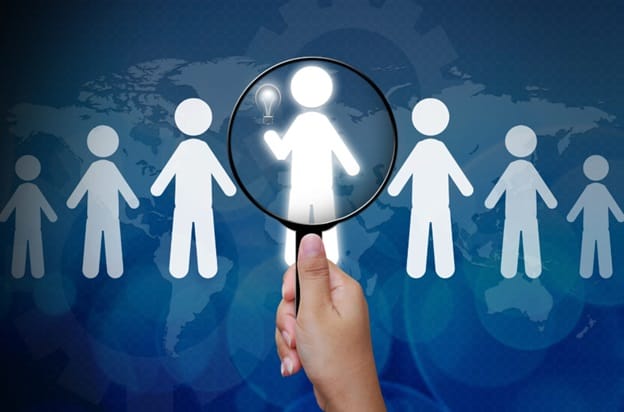DEI - Hope or Strategy?

On June 25, 2021, competing political and social interests met global protests after the May 2020 death of George Floyd. As a step toward positive social change for the rights of all American citizens, President Biden responded by signing an Executive Order to advance Diversity, Equity, and Inclusion (DEI) initiatives within the federal government. Many Americans viewed the executive orders as “affirmative action 2.0” and a socialist browbeating. Today, DEI is a blend of continually evolving conversations about political, social, and economic philosophies that impact economic exchange. Simply put, it’s a conversation about far too many competing interests.
Similarly, the social justice movements of the 1960s resulted in the Civil Rights Act of 1964 and subsequent policies and practices, referred to as “affirmative action.” Anyone familiar with the “why” here will offer that it was a government response to correct long-standing discriminatory practices against minority groups and women. Affirmative action was, and still is, a conversation about many competing interests.
DEI is often criticized for practices that result in outcomes that achieve the direct opposite of the intended effect. Attend any “inclusion” event from Black History month to Pride Month observances and they often have one thing in common. Only Black people go to the Black History Month events and only LGBTQIAP+ (and there's more) people go to the Pride Month events and consequently, they have become exclusionary.
Shortly after taking on my role as a DEI leader in my organization, I ran into a colleague who candidly asked "So, what are you doing with diversity?" They asked with neck-popping enthusiasm that only a cynic could appreciate. I told them my intent was to make a case within our community that DEI could be operationalized with a data-driven approach to drive outcomes that supported readiness. Anticipating some form of political talking points, they were shocked. I shouldn't have to write this but, I am a professional. They apologized for doubting me.
As part of my organization’s work to align itself with the President’s executive orders, the institution held a DEI Symposium in DC to allow emergent professionals working in newly established DEI offices a space to connect and grow with best practices as they learn how to execute on something new. As someone who worked at the “tip of the spear”, my teams were often asked to lead and “path find” in new endeavors for the DoD, so my task was to attend, connect to the latest information, share how my community had executed a new “thing” within our teams’ formations. Near the end of the trip, I was invited to attend a follow-on training event at University of Virginia’s DC Metro campus. The event was one of the build-it-as-it’s-flying sorts to certify DoD “practitioners” to work in the DEI space.
At some point in the program the conversation about talent came up. For anyone unfamiliar with studying human capital, the discussion on talent and the challenge in defining it always comes up, or at least it should. A quick look at the definitions of talent and you’ll learn that it is called a “natural aptitude or skill,” or even “people who possess this aptitude or skill.” Okay, easy enough.
For the management professional, talent is any person or attribute that is doing something of value for the business. Regardless of the industry, a person is only hired, a machine is only purchased if they, or it demonstrates value for the company. Their task is to solve some sort of problem for the business, and that business’ task is to produce some good, or service in exchange for some form of economic value.

That’s the whole chain- soup to nuts, as they say.
So, as I listened to the facilitator guide the discussion toward talent, I began to understand that they were referring to everyone in a company as “talent.” My inner skepticism kicked in, and I thought I was getting too much of a textbook conversation. So, I asked if talent could be described as a spectrum. Does DEI mean that there are no varying degrees of talent, and everyone gets equal treatment (in the holistic sense) because they’re on the team? Does every employee demonstrate the same value when applied to the firm’s exchange of resources for economic value? This statement is a bit of academic jargon, but is everyone the same? And even further, do we treat everyone the same?
And therein lies the problem for DEI. It’s ultimately a political conversation about our definitions and preferences for talent in exchange for economic value. It’s an understanding of the American population (diversity), offering fair treatment for all people (equity), and the act of including all American citizens (inclusion). It quickly becomes too complicated.
For complicated discussions, let's start with simple definitions.
Diversity in the workforce encompasses various dimensions, with some commonly observed examples including gender, age, ethnicity, physical ability, and neurodiversity.
Gender diversity isn’t limited to men and women anymore, but the range of gender possibilities within the human experience. I know, it’s a lot.
Age diversity explores the mixture of generations within a group.
Ethnic diversity involves examining whether individuals within a group share common national or cultural traditions or come from diverse backgrounds.
Physical ability and neurodiversity include individuals with disabilities, whether visible or hidden.
Although gender, age, ethnicity, and physical ability are often emphasized when discussing workplace diversity, it is crucial to recognize that diversity extends beyond these visible dimensions. As Nobel Prize winner Richard Thaler emphasized, diversity in how people think is equally important. Yet, this definition often leaves out the functional diversity of occupations and the diversity of thought functional communities represented in various occupations.
Equity is a fundamental principle encompassing fair treatment for all individuals. It aims to eliminate discriminatory barriers that may hinder equal opportunities or outcomes in the workplace. Unlike the concept of equality, which assumes that all individuals should be treated the same, equity recognizes and acknowledges the distinct circumstances of each person. It involves adjusting policies, practices, and norms to provide tailored treatment and ensure that the ultimate result is equal.
Equality, in DEI, operates on the assumption that everyone starts from the same point and should be treated identically. While this may seem just, it fails to acknowledge the systemic disadvantages and privileges that different individuals may have. Equity, however, recognizes that people have unique needs, backgrounds, and experiences that must be considered. It attempts to highlight individuals' different starting positions and works towards creating a level playing field by providing additional support or resources to those who require it.
